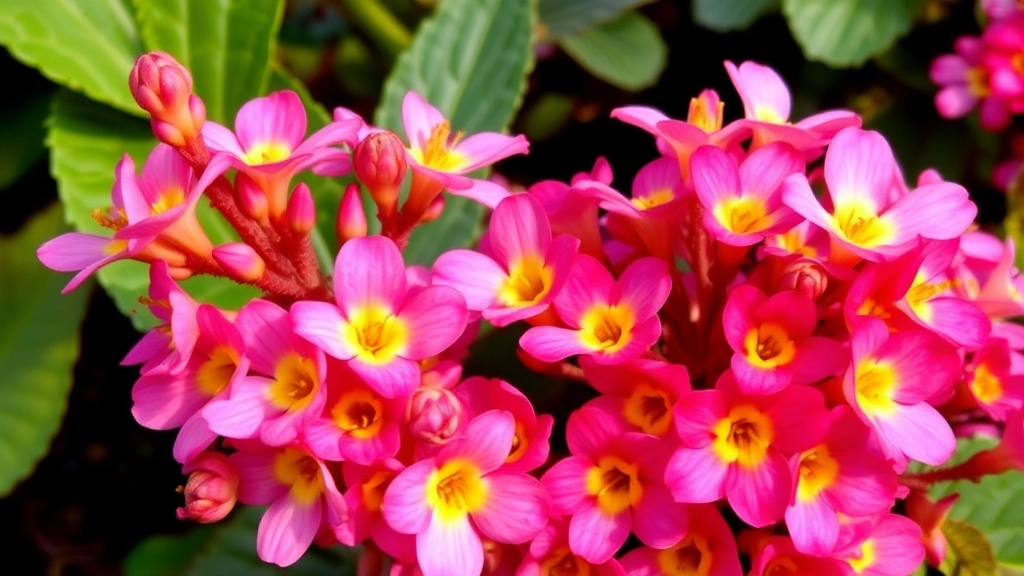Kalanchoe Flowering Season in India
Ever wondered when the best time is to see Kalanchoe flowers in full bloom in India? You’re in the right place. In this guide, I’ll walk you through the Kalanchoe flowering season in India, so you can enjoy these vibrant blooms at their peak.
Understanding the Flowering Season
Understanding the flowering season is key to getting the most out of your Kalanchoe plants. Let’s dive in and explore the best times and conditions for these beautiful flowers to thrive in the Indian climate.
Optimal Blooming Period for Kalanchoe in India
When it comes to cultivating Kalanchoe, timing is everything. Many gardeners often wonder, “When will my Kalanchoe bloom?” Understanding the optimal blooming period is essential for ensuring that your plants thrive and showcase their vibrant flowers.
In India, Kalanchoe typically blooms during the cooler months, particularly from late autumn to early spring. This period aligns with the plant’s natural growth cycle, taking advantage of the milder temperatures and increased daylight hours.
Key Blooming Periods:
– **October to March**: This is the primary blooming window.
– **Peak Bloom**: Often, the most spectacular displays occur in December and January.
Factors such as regional climate can influence these timings. For instance, in southern states with milder winters, blooming may start earlier, while northern regions might see a delay. For more detailed information on how to achieve optimal blooms, you can explore [tips for thriving blooms](https://planthq.org/hawaiian-kalanchoe-flower-care-tips-for-thriving-blooms/) and understand the [optimal bloom times in Australia](https://planthq.org/kalanchoe-flowering-season-in-australia-optimal-bloom-times/), which might provide additional insights applicable to similar climates.
Regional Variations in Flowering Time
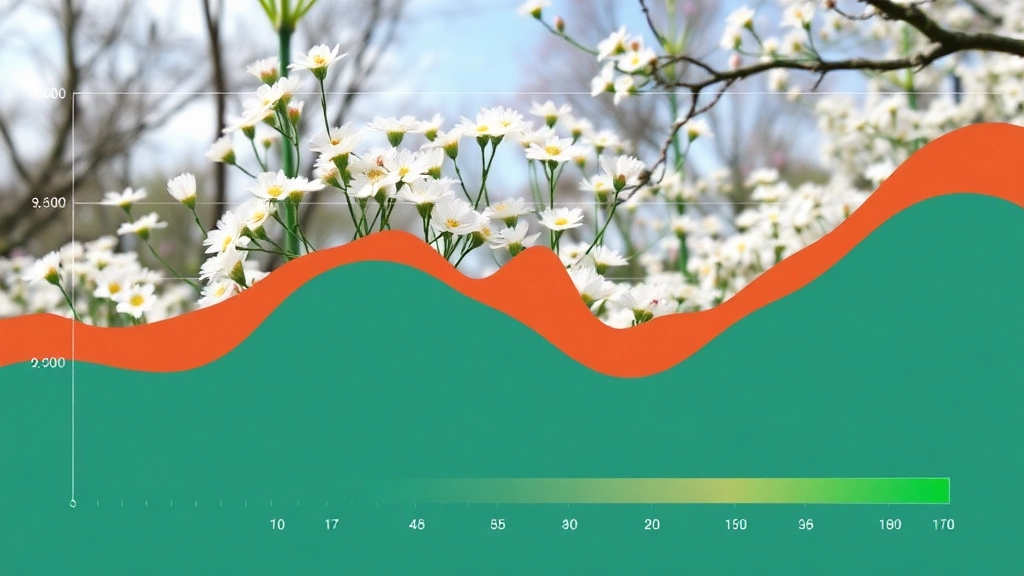
Have you ever wondered why your Kalanchoe blooms at different times depending on where you are in India?
It’s a common concern for many plant lovers.
Kalanchoe, while generally known for its vibrant flowers, can show some surprising regional variations in its flowering time.
Factors Influencing Flowering Time
- Climate Zones: India has diverse climate zones, from tropical to temperate.
- Temperature Fluctuations: In warmer regions, you might see blooms as early as late winter, while in cooler areas, flowering might not kick off until spring.
- Humidity Levels: High humidity can encourage earlier blooming, especially in coastal areas.
Regional Insights
- Southern India: In states like Tamil Nadu and Kerala, Kalanchoe often flowers from December to February. The warm, humid conditions create a perfect environment.
- Western India: In Maharashtra and Gujarat, expect blooms from January to March. The mild winters allow for a more extended blooming period.
- Northern India: Regions like Himachal Pradesh and Punjab might see flowering delayed until March or April due to cooler temperatures.
Why It Matters
Understanding these regional variations can help you plan better for your Kalanchoe care.
By knowing when to expect blooms, you can tailor your care routine for optimal results.
When considering the optimal conditions for Kalanchoe to thrive in India, one cannot overlook the significant role that climate plays in its flowering cycle.
Kalanchoe is a resilient plant, but its flowering is intricately tied to the climatic conditions of its environment.
### Key Climate Factors Affecting Flowering:
– **Temperature**: Kalanchoe prefers moderate temperatures ranging from 15°C to 25°C. Extreme heat or cold can hinder blooming.
– **Humidity**: A dry atmosphere encourages flowering, while excessive humidity may lead to fungal issues.
– **Seasonal Changes**: Flowering is often triggered by changes in day length and temperature. In India, the cooler months from October to February are typically the best for blooms.
– **Sunlight Exposure**: Kalanchoe thrives in bright, indirect sunlight. Too much direct sunlight can scorch the leaves, while too little can delay flowering.
### Real-Life Example:
In regions like Rajasthan, where the climate is arid, Kalanchoe blooms profusely during the winter months. Conversely, in coastal areas like Kerala, high humidity levels can lead to lush foliage but fewer flowers.
Understanding these climatic influences can help you tailor your care for Kalanchoe, ensuring a vibrant display of blooms. For more detailed care tips, you might find this [ultimate guide to Kalanchoe Blossfeldiana hybrid care](https://planthq.org/ultimate-guide-to-kalanchoe-blossfeldiana-hybrid-care/) helpful. Additionally, if you’re curious about why your Kalanchoe might not be flowering, check out this article on [causes and solutions](https://planthq.org/why-your-kalanchoe-is-not-flowering-causes-and-solutions/).
Best Practices for Encouraging Blooms
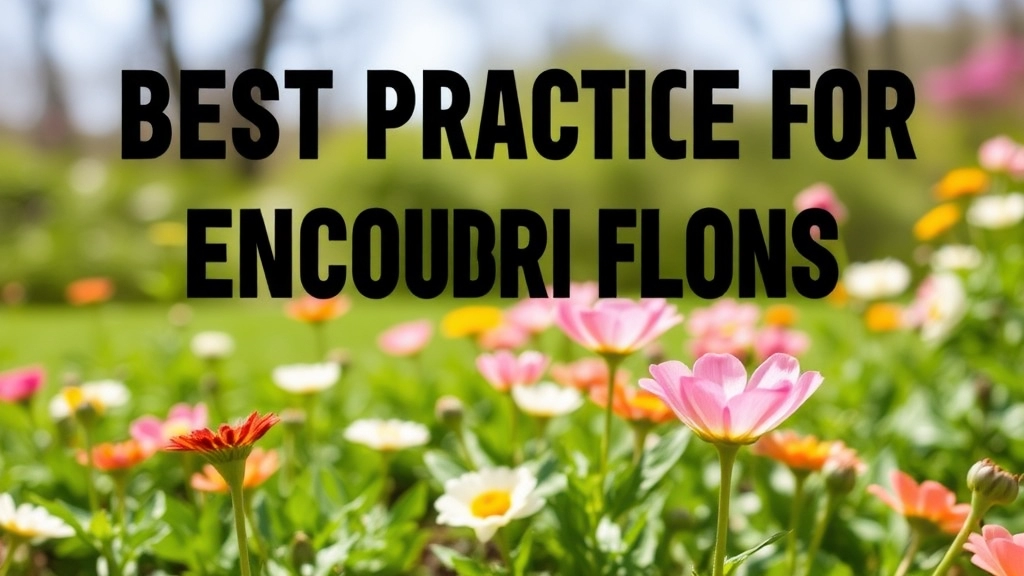
As we explore the best practices for encouraging blooms in Kalanchoe, it’s essential to understand how to create an optimal environment for these vibrant plants. Many gardeners often wonder why their Kalanchoe isn’t blooming as expected.
Key Strategies for Blooming Success
To ensure your Kalanchoe thrives and produces an abundance of flowers, consider the following tips:
- Pruning: Regularly prune dead or wilted flowers. This not only promotes new growth but also directs energy towards blooming.
- Fertilization: Use a balanced, water-soluble fertilizer every few weeks during the growing season. Look for a formula high in phosphorus, which is vital for flower production.
- Temperature Control: Kalanchoe prefers a temperature range of 18-24°C. Avoid exposing the plant to extreme temperature fluctuations.
- Stress Induction: Surprisingly, a little stress can encourage blooming. Reduce watering slightly before the expected blooming period to stimulate flower production.
- Pest Management: Keep an eye on pests, as infestations can hinder blooming. Regular inspections and natural pest control methods can help maintain plant health.
By implementing these practices, you can create a flourishing environment that encourages your Kalanchoe to display its beautiful blooms.
When it comes to achieving vibrant blooms in Kalanchoe, understanding its soil and nutrient needs is crucial. Many gardeners wonder, “What type of soil is best for Kalanchoe?” or “How can I ensure my plants receive the right nutrients?” Let’s explore these essential factors.
### Ideal Soil Composition
Kalanchoe thrives in well-draining soil. Here are key components to consider:
– **Potting Mix**: Use a cactus or succulent potting mix, as it provides excellent drainage.
– **Perlite or Sand**: Incorporate perlite or coarse sand to enhance aeration and prevent water retention.
– **Organic Matter**: A small amount of organic matter, like compost, can provide necessary nutrients without compromising drainage.
### Nutrient Requirements
Kalanchoe doesn’t require heavy feeding, but proper nutrition is vital for healthy growth and blooming. Here’s a simple guide:
– **Fertiliser Type**: Use a balanced, water-soluble fertiliser, preferably one with a higher phosphorus content to encourage flowering.
– **Feeding Schedule**: Feed every 4-6 weeks during the growing season (spring and summer). Reduce feeding in autumn and winter.
– **Signs of Nutrient Deficiency**: Watch for yellowing leaves or stunted growth, which may indicate a need for nutrients.
For more detailed tips, you can check out this [expert guide on Kalanchoe care](https://planthq.org/how-to-care-for-kalanchoe-succulent-expert-tips/).
### Tips for Soil Maintenance
– **pH Level**: Aim for a slightly acidic to neutral pH (6.0 to 7.0).
– **Repotting**: Consider repotting every couple of years to refresh the soil and provide more space for growth.
If you’re interested in propagating your Kalanchoe, here’s a [step-by-step guide on growing Kalanchoe from leaf cuttings](https://planthq.org/how-to-grow-kalanchoe-from-leaf-cuttings-stepbystep-guide/).
Watering Schedule for Maximum Bloom

So, you’re keen to get those Kalanchoe blooms bursting with colour, right? One of the biggest worries for plant lovers is often about how much to water.
Finding the Right Balance
Kalanchoe thrives on a careful watering schedule. Overwatering can lead to root rot, while underwatering can stress the plant. Here’s how to nail it:
- Check the Soil: Always feel the top inch of the soil. If it’s dry, it’s time to water.
- Watering Frequency: Generally, water every 2-3 weeks during the growing season (spring and summer). In winter, you can cut back to once a month.
- Drainage is Key: Make sure your pot has good drainage holes. Standing water is a big no-no.
Signs of Overwatering vs. Underwatering
Knowing the signs can save your plant:
- Overwatering Signs: Yellowing leaves, mushy stems, and a sour smell from the soil.
- Underwatering Signs: Wrinkled leaves, drooping, and dry soil.
Water Quality Matters
Using clean, room-temperature water is best. If you can, rainwater or distilled water works wonders.
Light Conditions for Flowering
When it comes to ensuring your Kalanchoe blooms beautifully, light conditions play a pivotal role. Many plant enthusiasts often wonder, “How much light does my Kalanchoe really need?”
Kalanchoe plants thrive in bright, indirect sunlight. Here are some essential points to consider:
- Ideal Light Exposure: Aim for at least 6 hours of bright light each day. Morning sunlight is particularly beneficial, as it’s less intense than afternoon rays.
- Avoid Direct Sunlight: While Kalanchoe enjoys bright light, direct sunlight can scorch its leaves. A south-facing window is often the best spot.
- Supplemental Lighting: If natural light is limited, consider using grow lights. This can help mimic the ideal conditions for flowering.
- Signs of Insufficient Light: If your Kalanchoe is stretching towards the light or its growth is stunted, it may need more exposure.
- Seasonal Adjustments: During the blooming period, you might need to adjust its placement as the sun’s angle changes with the seasons.
Providing the right light conditions not only promotes flowering but also contributes to the overall health of the plant. For more detailed information, check out our solutions and tips for non-flowering Kalanchoe. Additionally, if you’re interested in learning about how Kalanchoe can thrive in shade, we have a comprehensive guide on that topic as well.
Common Pests and Diseases of Kalanchoe
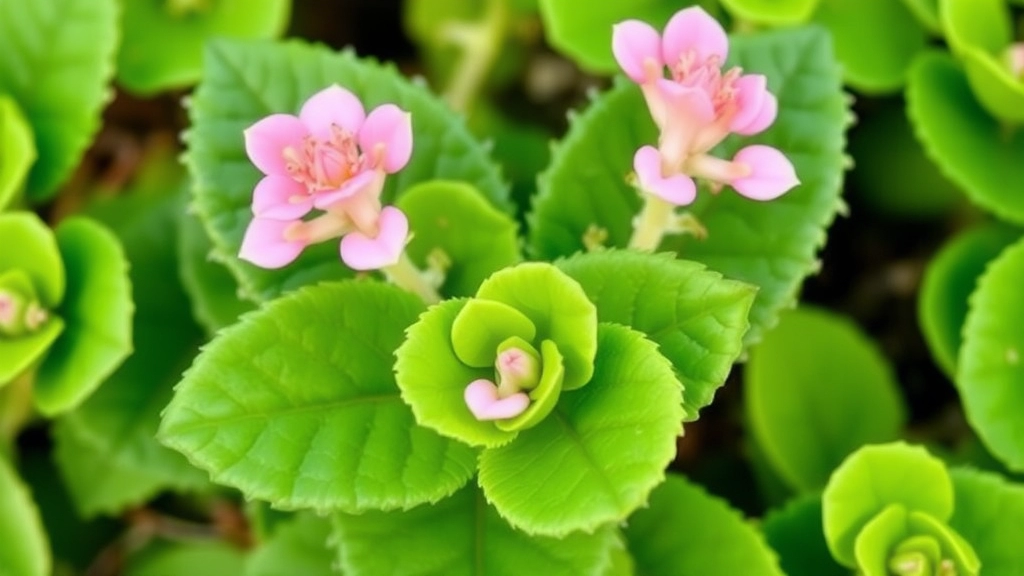
So, you’ve got your Kalanchoe blooming beautifully, but then you notice something’s off. Maybe the leaves look a bit nibbled, or there’s a strange discolouration. It’s a real worry, isn’t it?
Let’s dive into the common pests and diseases that can affect your Kalanchoe and how to tackle them like a pro.
Common Pests
- Mealybugs
– These little white fluff balls love to hide in the leaf axils.
– They suck the sap, weakening your plant.
– Tip: Wipe them off with a cotton swab dipped in rubbing alcohol. - Aphids
– Tiny and usually green or black, these pests can multiply quickly.
– They also feast on sap, leading to stunted growth.
– Tip: A strong spray of water can dislodge them, or use insecticidal soap. - Spider Mites
– These tiny critters thrive in dry conditions.
– Look for fine webbing on the undersides of leaves.
– Tip: Increase humidity around your plant or use neem oil to get rid of them.
Common Diseases
- Powdery Mildew
– This fungal disease appears as a white powder on leaves.
– It often happens with poor air circulation.
– Tip: Improve airflow and avoid overhead watering. - Root Rot
– Overwatering can lead to mushy roots, which is a plant’s worst nightmare.
– Signs include yellowing leaves and a foul smell from the soil.
– Tip: Ensure your pot has drainage holes and let the soil dry out between waterings. - Leaf Spot
– Dark spots on leaves can indicate a bacterial or fungal infection.
– It’s often caused by water sitting on the leaves.
– Tip: Remove affected leaves and avoid watering from above.
Prevention is Key
Keeping your Kalanchoe healthy is all about prevention. Regular checks can help catch issues early.
- Inspect your plants weekly for signs of pests.
- Maintain good air circulation around your plants.
- Use well-draining soil to prevent root rot.
Seasonal Care Tips for Kalanchoe
As we delve into the seasonal care tips for Kalanchoe, it’s essential to remember that these plants thrive with the right attention throughout the year. Many enthusiasts often wonder how to maintain their Kalanchoe to ensure vibrant blooms and healthy foliage.
Spring Care
- Repotting: This is the ideal time to repot your Kalanchoe if it’s outgrown its pot. Choose a pot that is slightly larger.
- Fertilization: Use a balanced fertiliser every four weeks to encourage new growth.
- Pruning: Trim any dead or wilting leaves to promote air circulation and prevent disease.
Summer Care
- Watering: Increase the watering frequency as temperatures rise, but ensure the soil dries out between waterings.
- Light: Provide bright, indirect sunlight to avoid scorching the leaves.
- Pest Monitoring: Keep an eye out for pests like aphids and mealybugs, which can thrive in warm conditions.
Autumn Care
- Temperature Adjustment: As temperatures drop, maintain a warm environment for your Kalanchoe, ideally around 20°C.
- Reduced Watering: Cut back on watering as the plant enters dormancy. Water only when the soil feels dry.
- Fertilisation: Stop fertilising to allow the plant to rest before the blooming period.
Winter Care
- Light Requirements: Ensure your Kalanchoe receives adequate light, as days are shorter. Consider using grow lights if necessary.
- Humidity Control: Keep the humidity levels moderate; avoid placing the plant near heating vents.
- Water Sparingly: Water less frequently, allowing the soil to dry out completely between waterings to prevent root rot.
For more detailed guidance on how to care for specific Kalanchoe varieties, check out our Kalanchoe Paddle Plant Care Guide and our comprehensive Ultimate Guide to Growing Kalanchoe Pink Flowers.
Propagation Methods for Kalanchoe
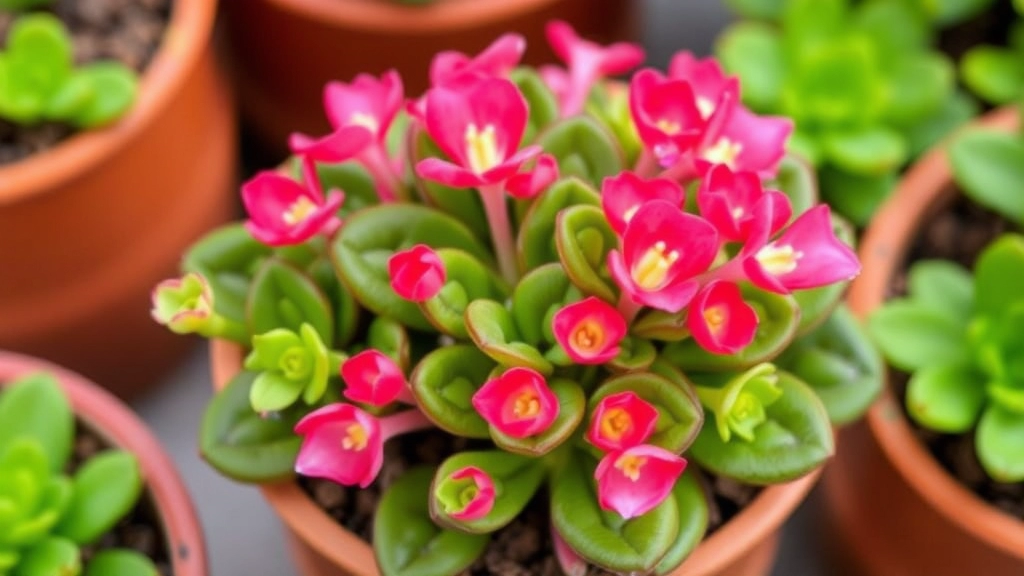
So, you’re loving your Kalanchoe and thinking about spreading that joy?
Propagation is a fantastic way to multiply your plants without breaking the bank.
Here are some simple methods to get you started:
1. Leaf Cuttings
- Choose a Healthy Leaf: Pick a plump, healthy leaf from your Kalanchoe.
- Let It Callous: Leave the cutting in a dry place for a couple of days until the cut edge dries out.
- Plant It: Place it in well-draining soil, burying the cut end. Water lightly.
2. Stem Cuttings
- Select a Stem: Find a healthy stem with a few leaves.
- Cut and Callous: Cut it just below a leaf node and let it callous for a day.
- Pot It: Stick the cutting in soil, ensuring the leaves don’t touch the soil. Water gently.
3. Offsets
- Look for Offsets: These are small plants that grow at the base of the parent plant.
- Remove Carefully: Gently twist or cut them off.
- Replant: Place them in their own pots with fresh soil and water lightly.
4. Seeds
- Sow Seeds: If you’re feeling adventurous, you can start from seeds.
- Prepare Soil: Use a seed-starting mix and sow seeds on the surface.
- Keep Moist: Lightly mist the soil and cover with plastic until they sprout.
Propagation is not just about multiplying plants; it’s about sharing and nurturing.
When considering the best environment for Kalanchoe flowering, many enthusiasts often wonder: “Should I keep my Kalanchoe indoors or outdoors for optimal blooms?”
Both indoor and outdoor settings have their unique advantages and challenges.
### Indoor Flowering
Indoor Kalanchoe can flourish beautifully, provided you meet their specific needs.
**Key Factors for Indoor Blooming:**
– **Light:** Ensure bright, indirect sunlight. A south-facing window works wonders.
– **Temperature:** Keep your home warm, ideally between 18°C to 24°C.
– **Humidity:** Indoor air can be dry; consider using a humidifier.
– **Pest Control:** Regularly check for pests like mealybugs and aphids.
Indoor flowering allows for better control over environmental factors, making it easier to encourage blooms year-round. For more detailed tips, you can refer to [optimal care for Kalanchoe Blossfeldiana growth](https://planthq.org/optimal-care-for-kalanchoe-blossfeldiana-growth/).
### Outdoor Flowering
On the other hand, outdoor Kalanchoe can benefit from natural sunlight and fresh air.
**Key Factors for Outdoor Blooming:**
– **Sunlight:** Full sun exposure is ideal, ensuring at least 6 hours of direct light daily.
– **Soil Drainage:** Well-draining soil is crucial to prevent root rot.
– **Protection from Elements:** Shield from harsh winds and heavy rains.
– **Seasonal Care:** Monitor for pests and diseases, as outdoor plants are more susceptible.
Outdoor plants often produce more vibrant blooms due to the natural conditions they thrive in. To get your Kalanchoe to bloom effectively, check out this [step-by-step guide](https://planthq.org/how-to-get-kalanchoe-to-bloom-stepbystep-guide/).
Popular Kalanchoe Varieties in India
So, you’ve decided to bring some Kalanchoe into your lifeâgreat choice! But with so many varieties out there, which ones should you go for? Let’s dive into some of the most popular Kalanchoe varieties that thrive beautifully in India.
1. Kalanchoe blossfeldiana
- Description: Known for its vibrant clusters of flowers, this variety is a crowd-pleaser.
- Flowering Time: Typically blooms in winter, adding a splash of colour when most other plants are dormant.
- Care Tips: Prefers bright light and well-drained soil. For more detailed care tips, check out our Kalanchoe blossfeldiana flowering period care tips.
2. Kalanchoe tomentosa (Panda Plant)
- Description: This one’s a little different with its furry leaves and striking grey-green colour.
- Flowering Time: Blooms in late winter to early spring.
- Care Tips: Enjoys indirect sunlight and needs minimal watering. Learn more about the best watering practices in our Kalanchoe tomentosa watering guide.
3. Kalanchoe luciae (Flapjack)
- Description: With its thick, succulent leaves that turn red at the edges, it’s a real showstopper.
- Flowering Time: Blooms in summer.
- Care Tips: Thrives in full sun and requires less water.
4. Kalanchoe beharensis (Elephant Ear)
- Description: This variety has large, textured leaves that can grow quite tall.
- Flowering Time: Blooms sporadically throughout the year.
- Care Tips: Prefers bright light and well-draining soil.
5. Kalanchoe fedtschenkoi (Chandelier Plant)
- Description: Known for its cascading stems and unique leaf shape.
- Flowering Time: Blooms in late winter.
- Care Tips: Requires moderate sunlight and regular watering.
Why Choose These Varieties?
These Kalanchoe varieties not only add beauty to your space but are also relatively easy to care for. They adapt well to the Indian climate, making them perfect for both indoor and outdoor settings.
FAQs on Kalanchoe Flowering Season in India
Why does my Kalanchoe bloom at different times in different regions of India?
Kalanchoe flowering times can vary greatly depending on the region due to diverse climate zones. Factors like temperature fluctuations, humidity levels, and local climate conditions influence when the plant will bloom.
What are the typical flowering periods for Kalanchoe in different regions of India?
In Southern India (Tamil Nadu, Kerala), Kalanchoe flowers from December to February. In Western India (Maharashtra, Gujarat), expect blooms from January to March. Northern regions (Himachal Pradesh, Punjab) might see flowering delayed until March or April due to cooler temperatures.
How can I encourage my Kalanchoe to bloom?
To encourage blooming, practice regular pruning, use a balanced fertilizer high in phosphorus, maintain a temperature range of 18-24°C, induce slight stress by reducing watering before the blooming period, and manage pests effectively.
What is the best watering schedule for Kalanchoe to ensure maximum bloom?
Water Kalanchoe every 2-3 weeks during the growing season (spring and summer) and reduce to once a month in winter. Always check the top inch of soil before watering and ensure the pot has good drainage to prevent root rot.
What are the signs of overwatering and underwatering in Kalanchoe?
Overwatering signs include yellowing leaves, mushy stems, and a sour smell from the soil. Underwatering signs are wrinkled leaves, drooping, and dry soil.
What pests and diseases commonly affect Kalanchoe, and how can I manage them?
Common pests include mealybugs, aphids, and spider mites. Diseases like powdery mildew, root rot, and leaf spot can also affect Kalanchoe. Regular inspections, maintaining good air circulation, and using natural pest control methods can help manage these issues.
How can I propagate Kalanchoe?
Kalanchoe can be propagated through leaf cuttings, stem cuttings, offsets, and seeds. Each method involves specific steps to ensure successful propagation, such as allowing cuttings to callous before planting and ensuring proper soil moisture.
What are the benefits of understanding regional variations in Kalanchoe flowering times?
Understanding regional variations helps you plan better for Kalanchoe care, allowing you to tailor your care routine for optimal blooming results.
References
-
Kalanchoe Plant Bloom Time â When And How Do Kalanchoes Bloom?
-
Kalanchoe Care Guide: How to Grow Kalanchoe
-
Kalanchoe: How to Grow and Care for Kalanchoe Plants
